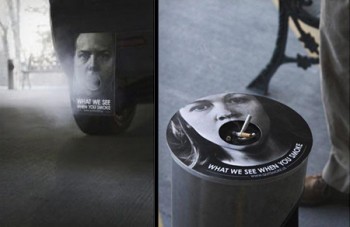Pricey cigarettes mean fewer teens smoke
Australia seems to have found ways to cut back on teen smoking, researchers from there report.
Higher taxes on cigarettes, expanded no-smoking rules, and well-funded tobacco control programs all helped lower rates of smoking among teenagers during the study.
“What this really shows is that we know ways to reduce smoking among youth,” Dr. Michael Siegel from the Boston University School of Public Health told Reuters Health.
“We have the tools at our disposal. It’s just a question of having the political will to implement these policies,” said Siegel, who studies tobacco control but was not involved in the current study.
According to the Centers for Disease Control and prevention, about one in six US high school students is a current smoker. Because most adult smokers pick up the habit before their 18th birthday, stopping teens from smoking is considered essential to preventing smoking-related deaths.
 In the current study, published in the journal Addiction, researchers led by Dr. Melanie Wakefield of The Cancer Council in Victoria set out to determine the effect of anti-smoking policies and hikes in cigarette taxes on teen smoking.
In the current study, published in the journal Addiction, researchers led by Dr. Melanie Wakefield of The Cancer Council in Victoria set out to determine the effect of anti-smoking policies and hikes in cigarette taxes on teen smoking.
Every 3 years, from 1990 through 2005, the researchers surveyed more than 20,000 Australian high school students, asking them if they had smoked a cigarette in the last month. Wakefield and her colleagues compared rates of teen smoking with changes in cigarette prices over those 15 years - adjusted for inflation - and with the state of anti-smoking policies, such as bans on smoking indoors.
The rate of teen smoking dropped from about 23 percent in 1990 to about 13 percent in 2005. In that same time period, the cost of cigarettes doubled, from almost 20 cents each to 40 cents each, due to increases in tobacco taxes.
The authors also found that as government spending on anti-smoking campaigns went up, teen smoking went down. The same was true for regulations on indoor smoking; the tighter the regulations, the less teenagers smoked.
Other anti-smoking programs - such as attempts to limit teens’ access to cigarettes - did not contribute to lower rates of teen smoking, but the authors said it’s hard to know how strongly those programs were enforced.
In fact, the methods that did work were all originally directed at adults, the researchers said in their report.
It seems kids were affected by “mass media campaigns ... (featuring) stories about people who have been harmed by smoking, or graphic images of how smoking harms the body,” Wakefield told Reuters Health in an email. Advertising that “emphasizes the serious health consequences of smoking in an emotional way also resonates with young people,” she said.
Wakefield added that “seeing smokers huddling outdoors in the cold at building entrances to snatch a quick cigarette makes smoking seem far less attractive to young people.”
The study doesn’t prove that anything Australia did actually caused teens to smoke less. To confirm that, researchers would have to set up a study with two groups of randomly chosen teenagers - one group having to pay the higher cigarette taxes, follow the stricter rules, and watch the anti-smoking ads, and the other group not - and see if their smoking habits changed over time. That kind of study isn’t feasible.
Siegel says that in the US, policies such as bans on smoking in restaurants have also helped cut smoking rates among teens. “These policies work not because they directly impact the youth, but because it changes the social environment” around smoking, he said. “It loses its appeal.”
But Siegel is concerned that such anti-smoking policies are no longer a top priority among US lawmakers. There’s a “perception that this problem is taken care of,” he said. “But that’s simply not true. We need to be putting more money into these kinds of programs that we know work.”
SOURCE: Addiction, online March 14, 2011.